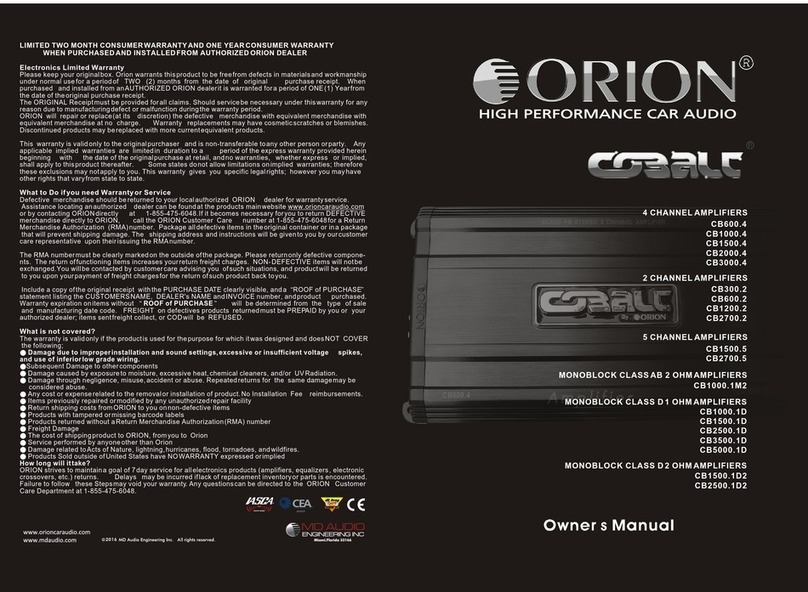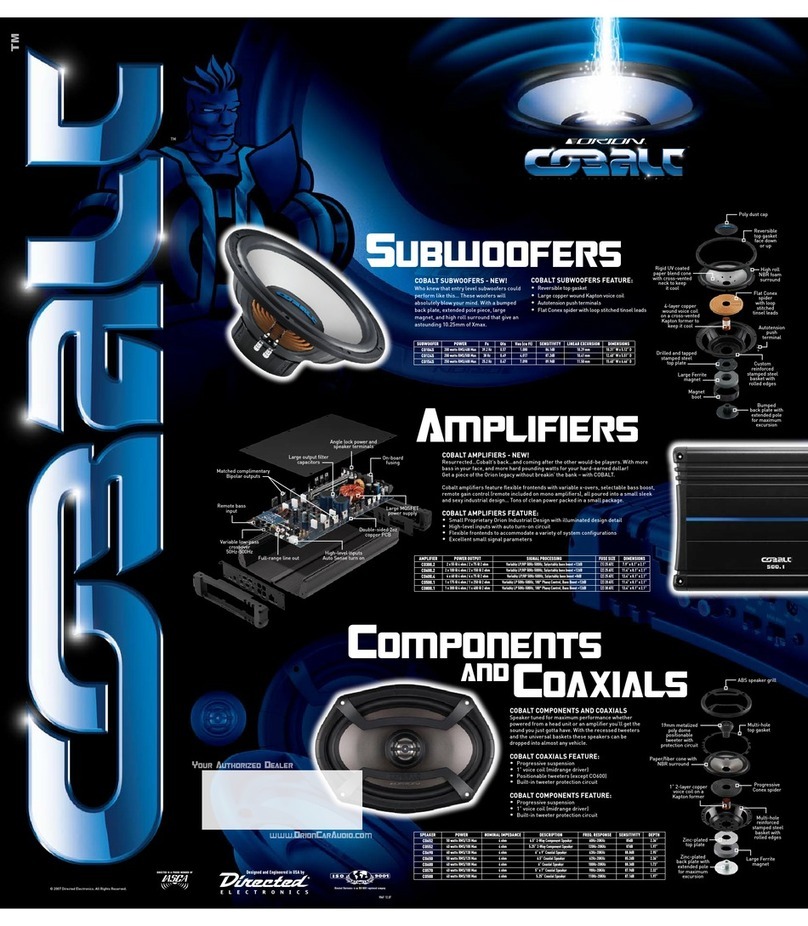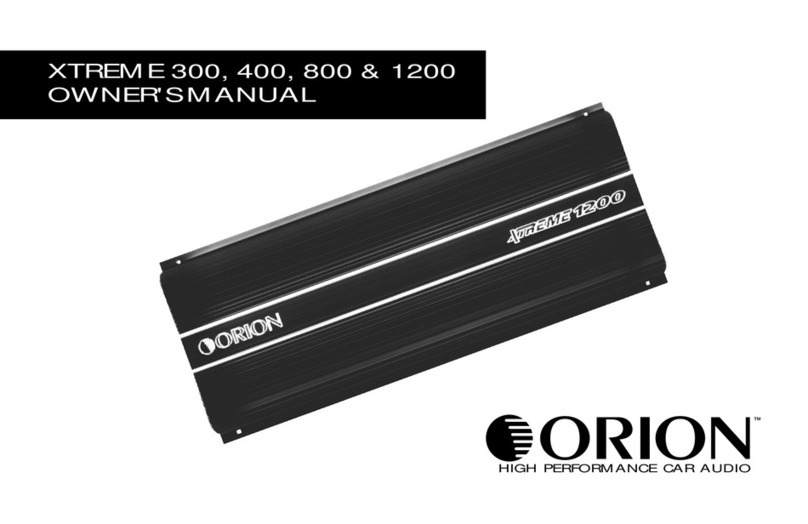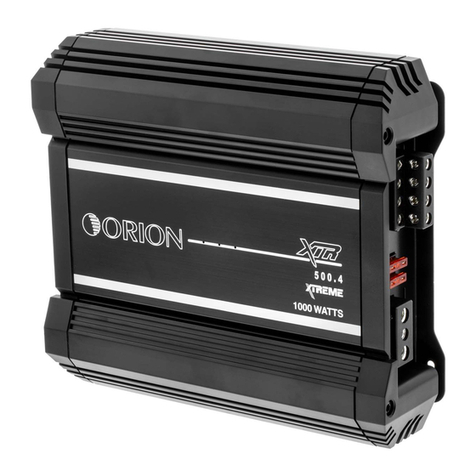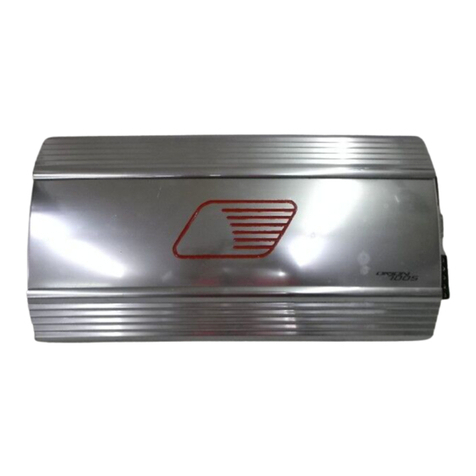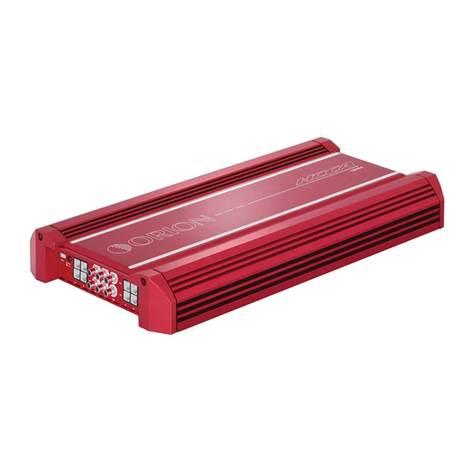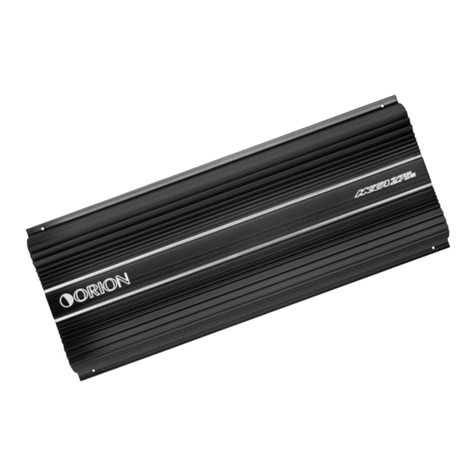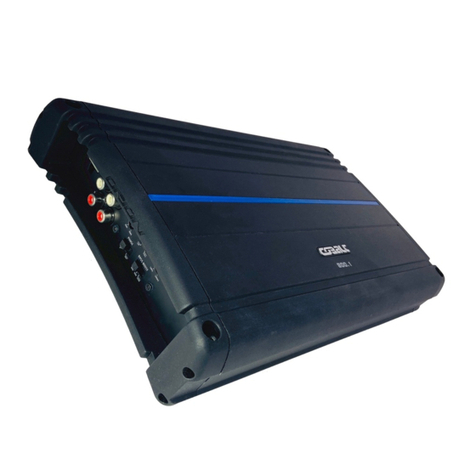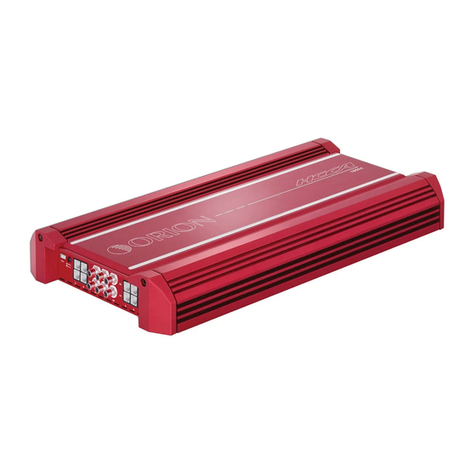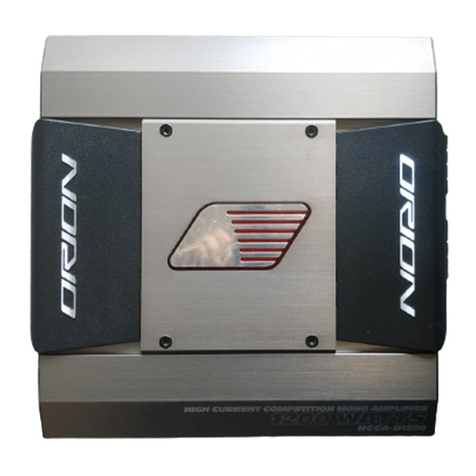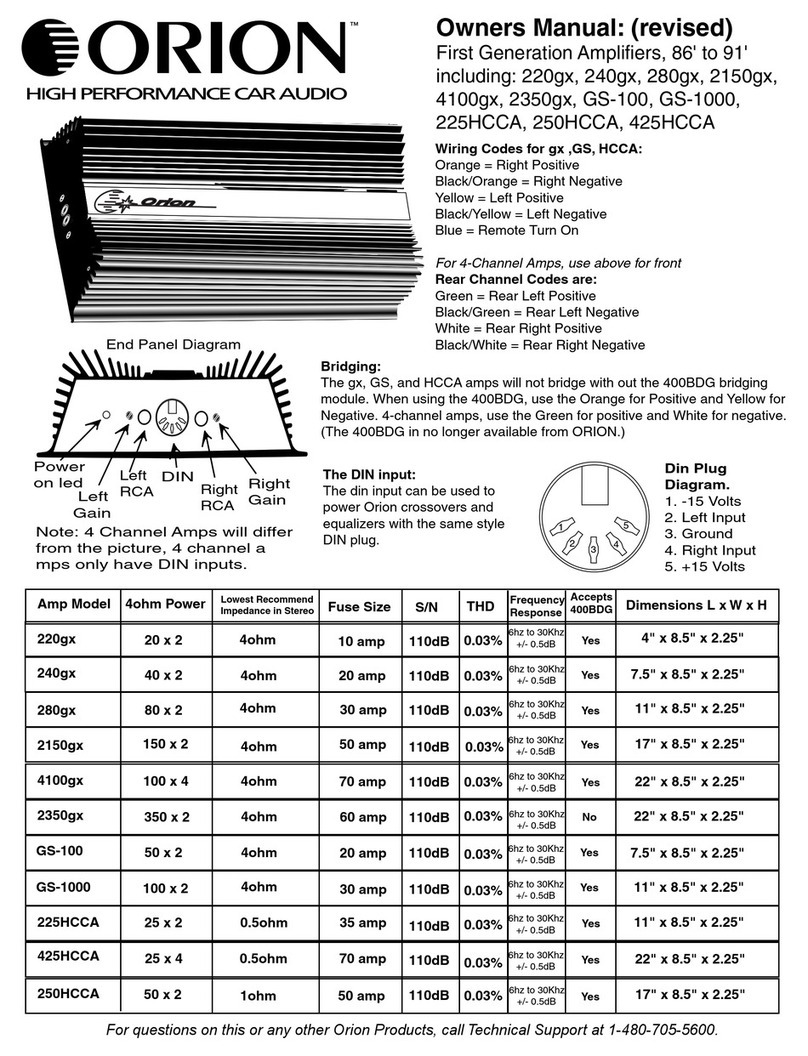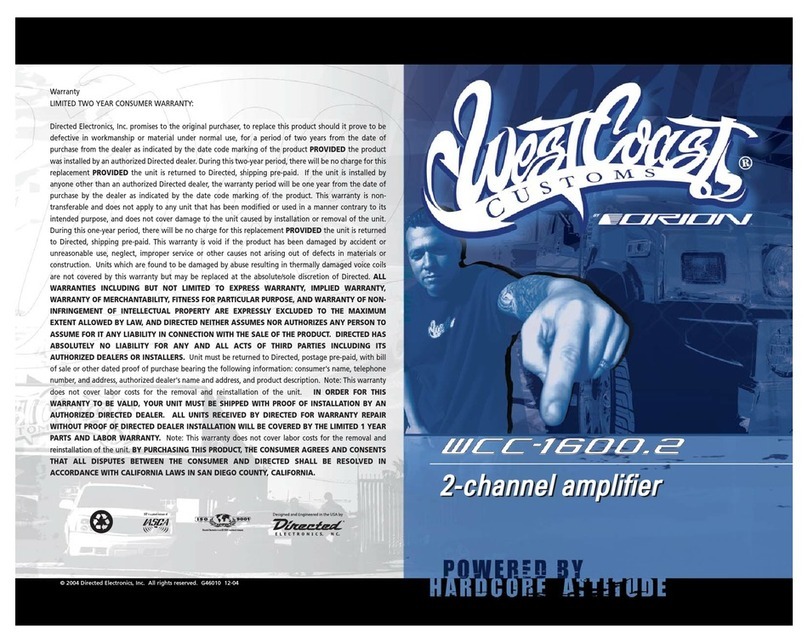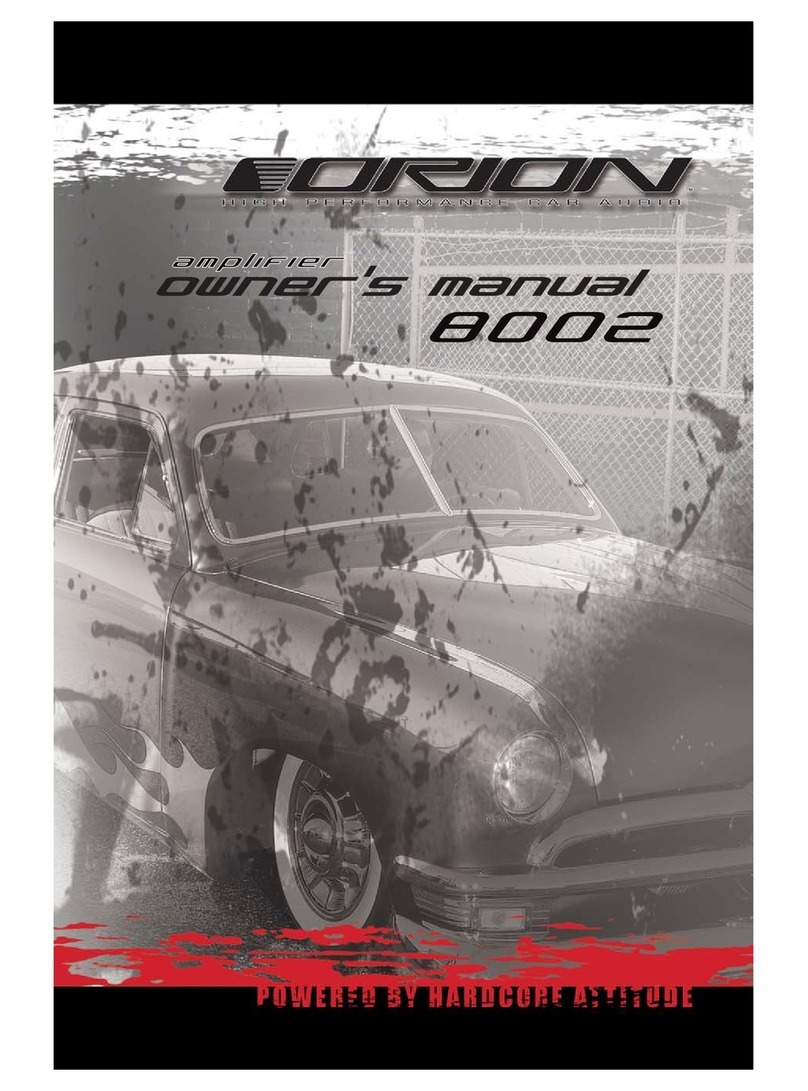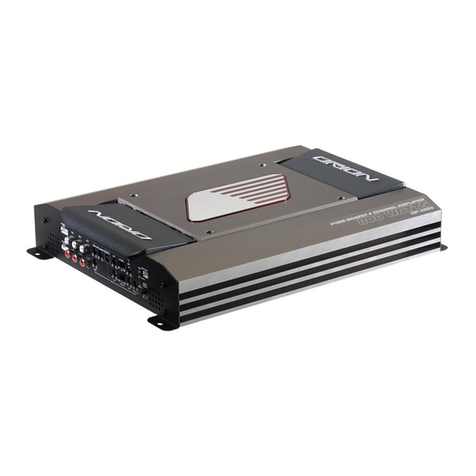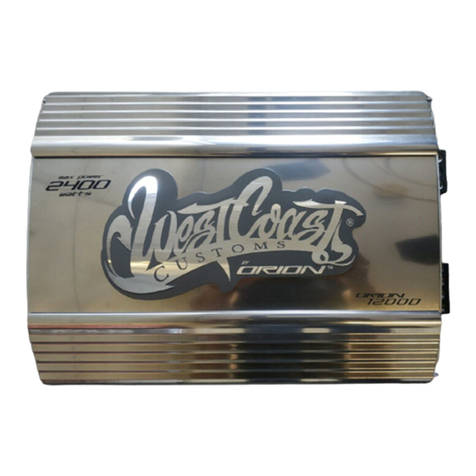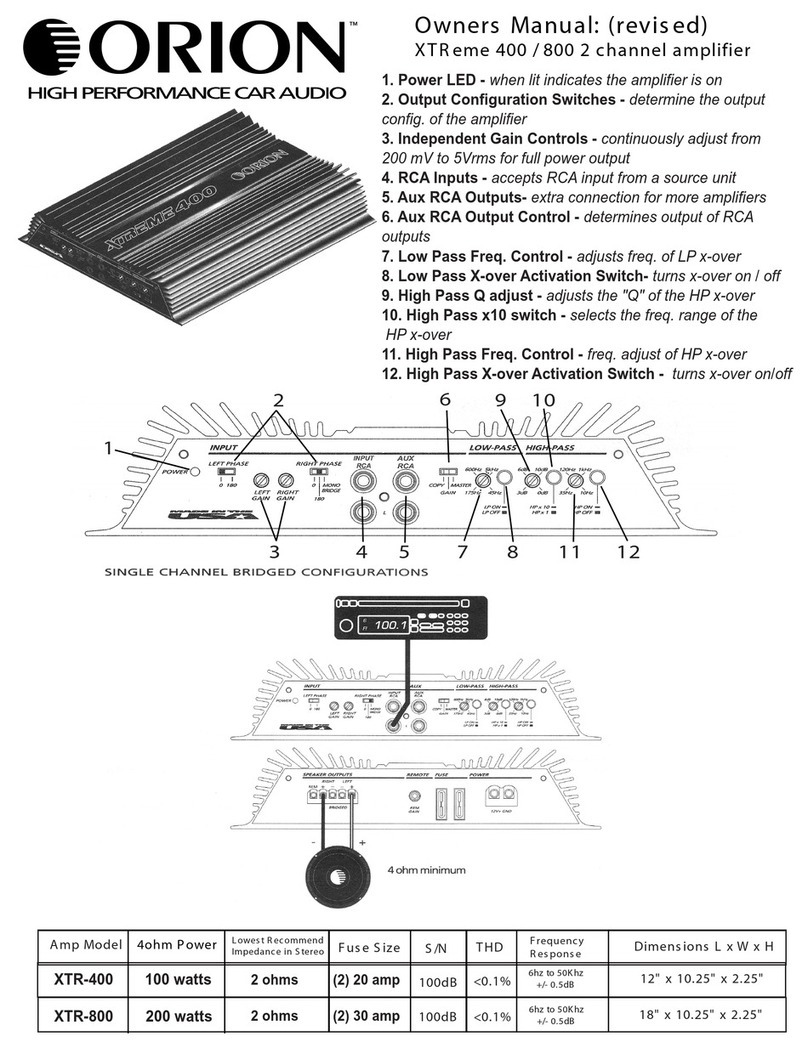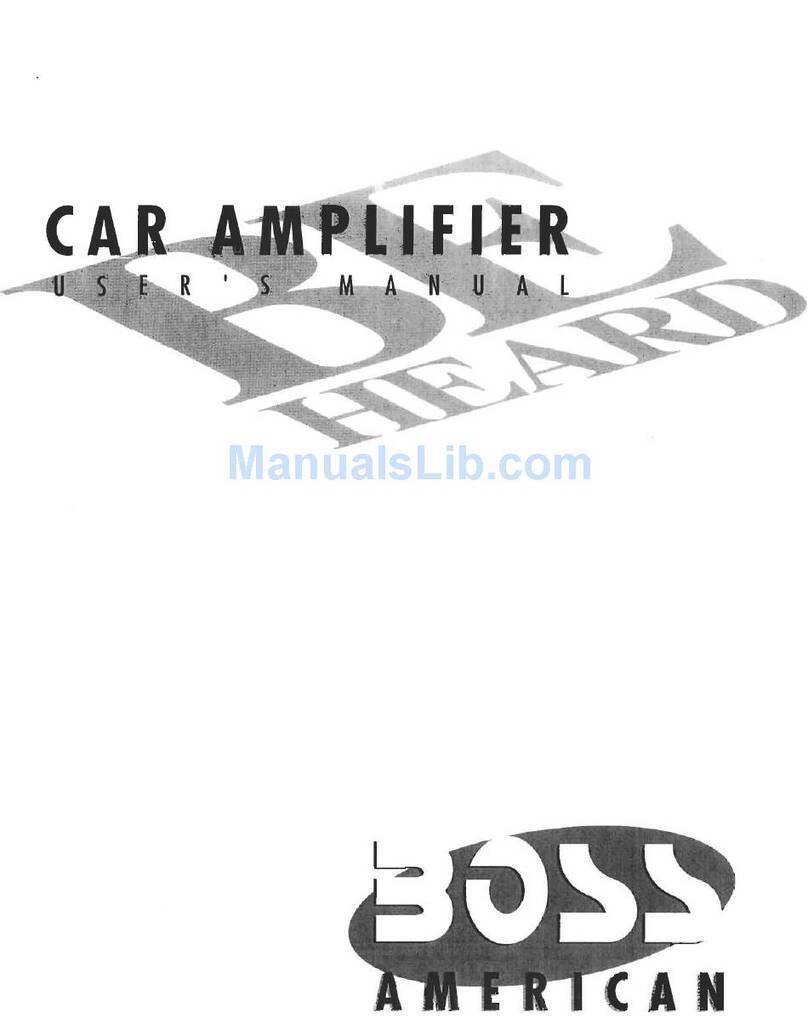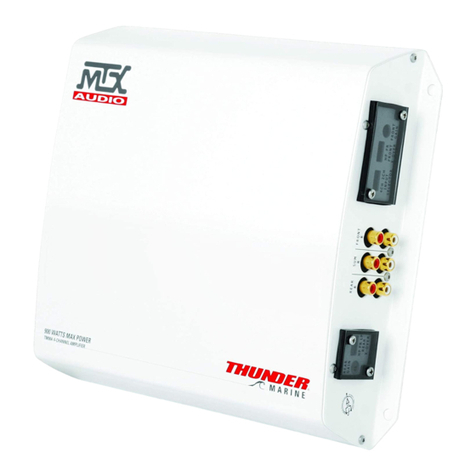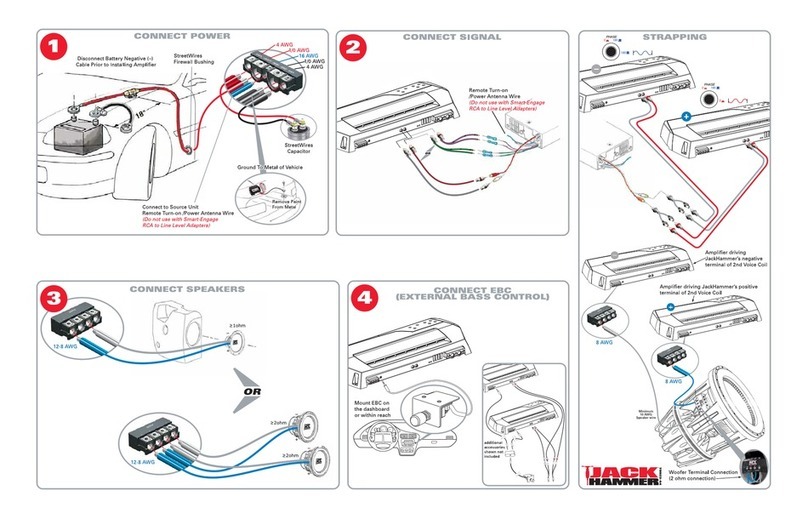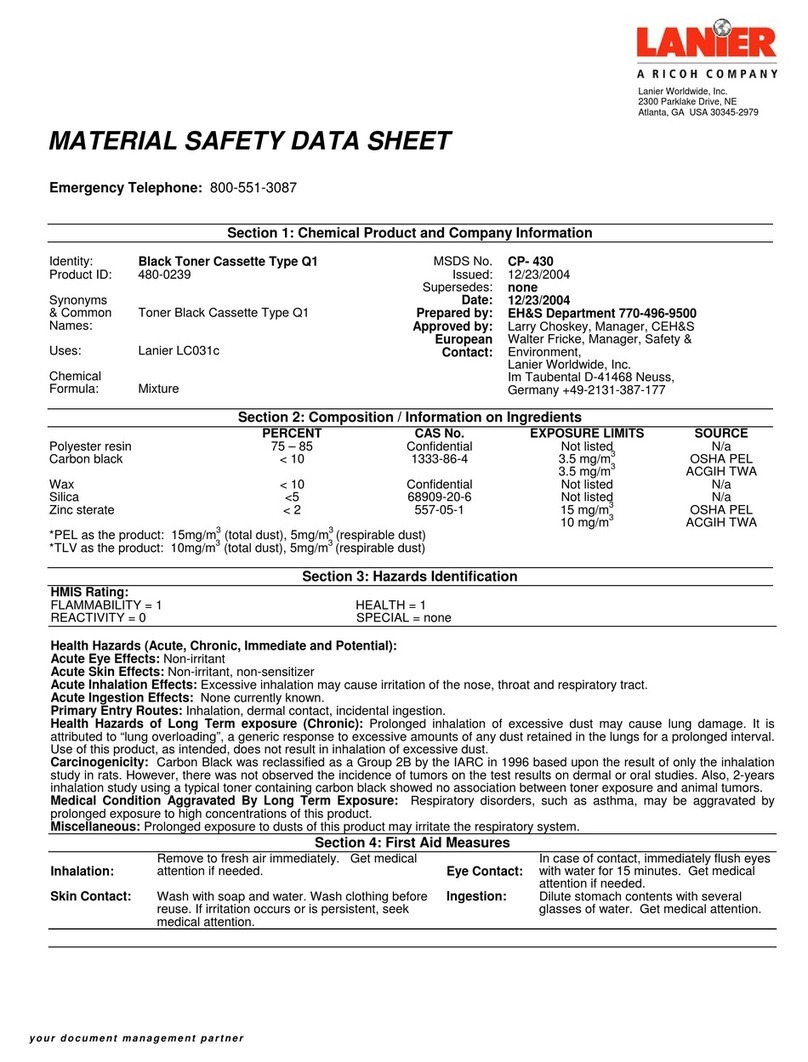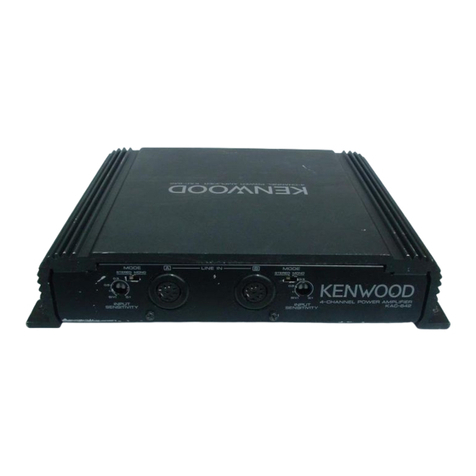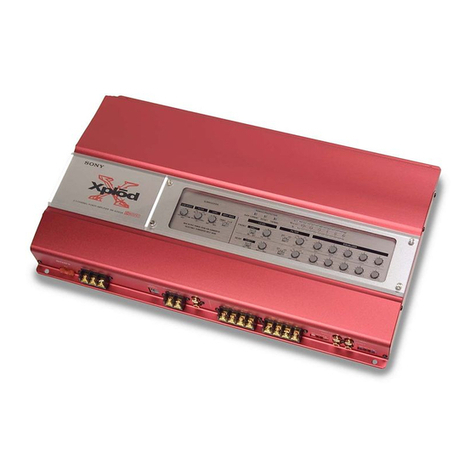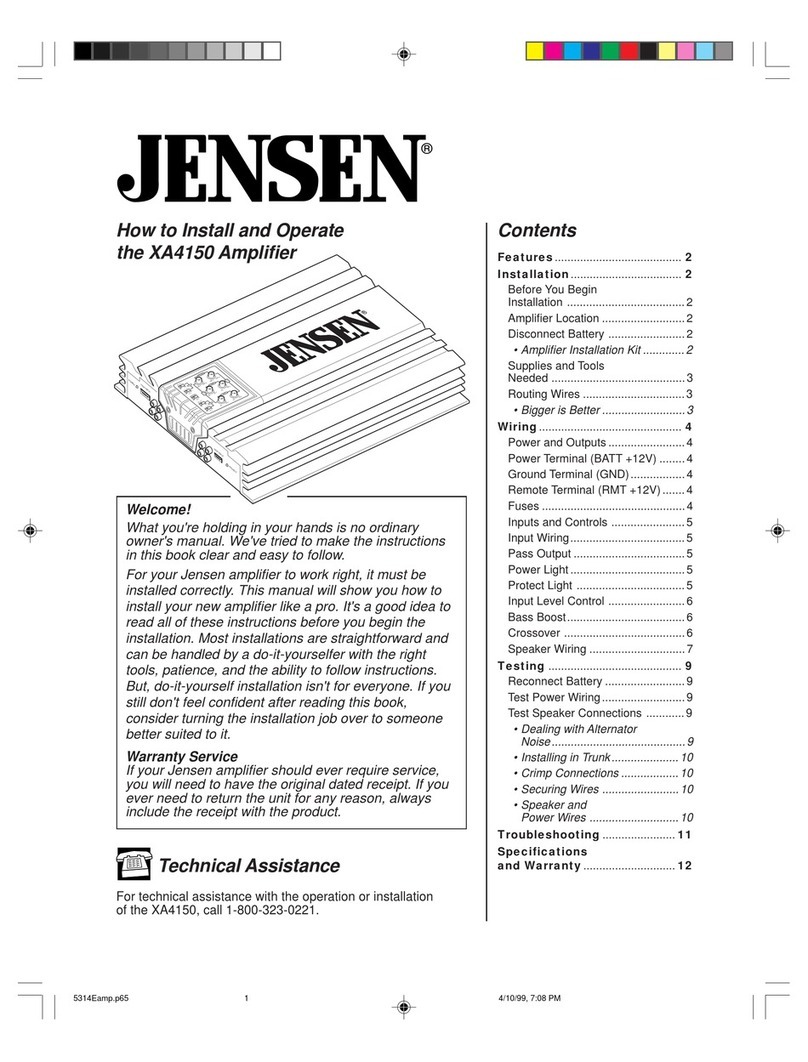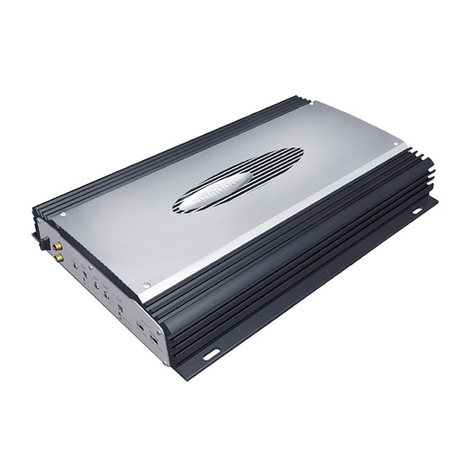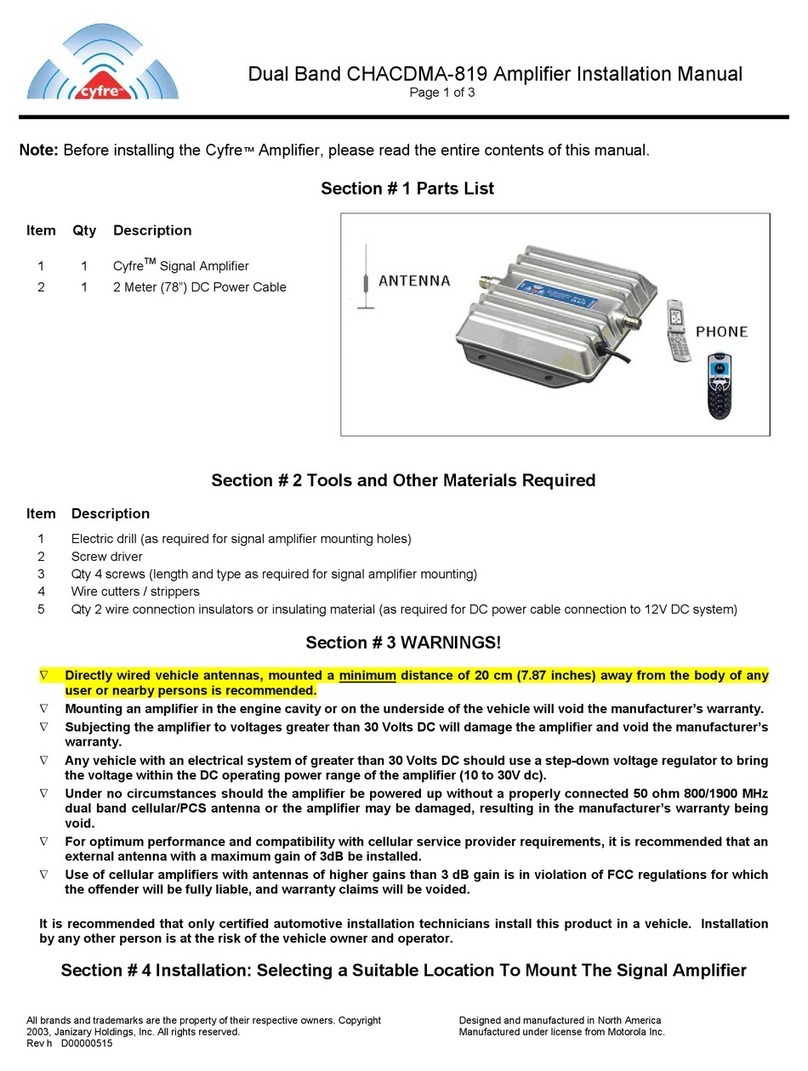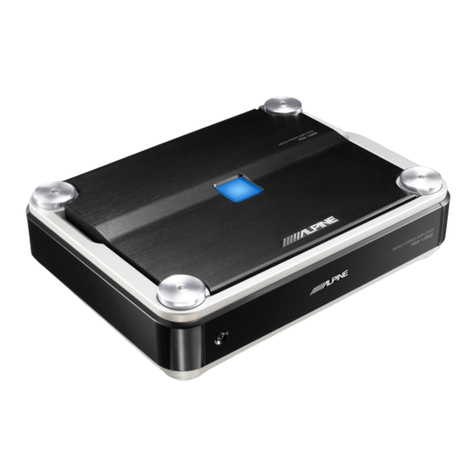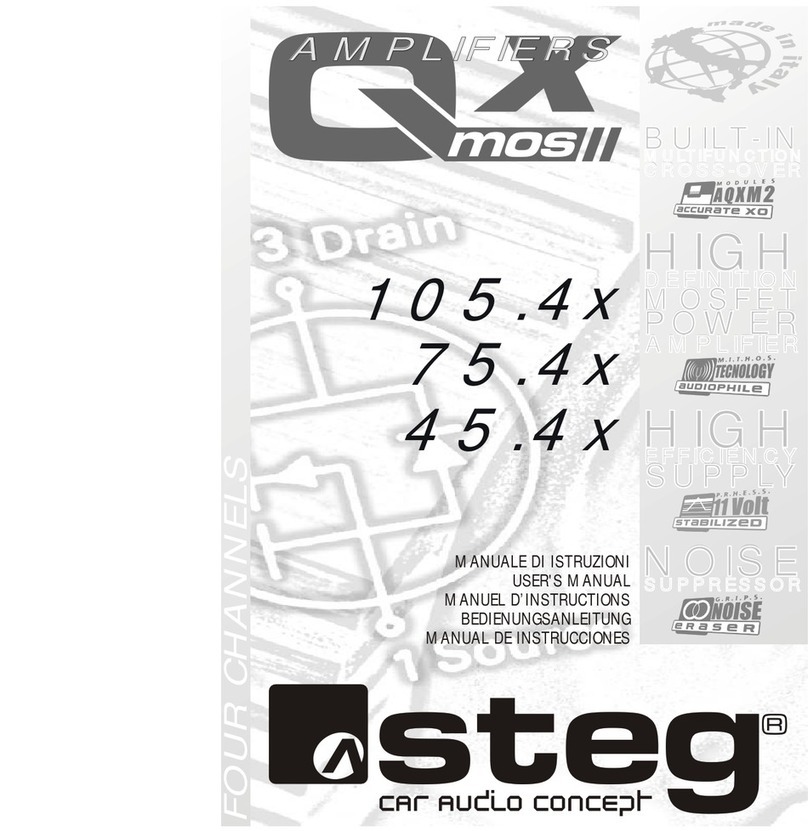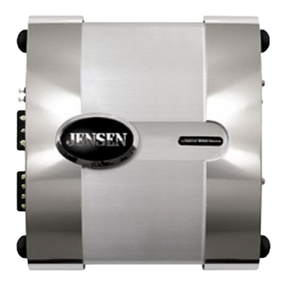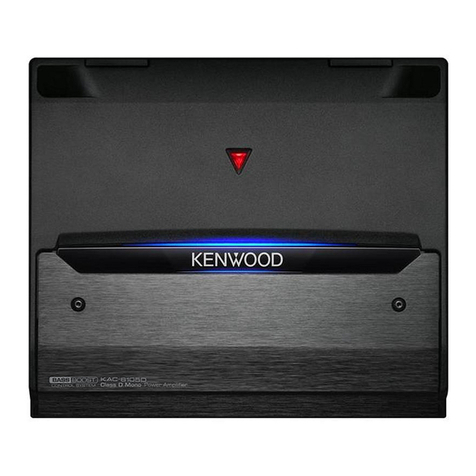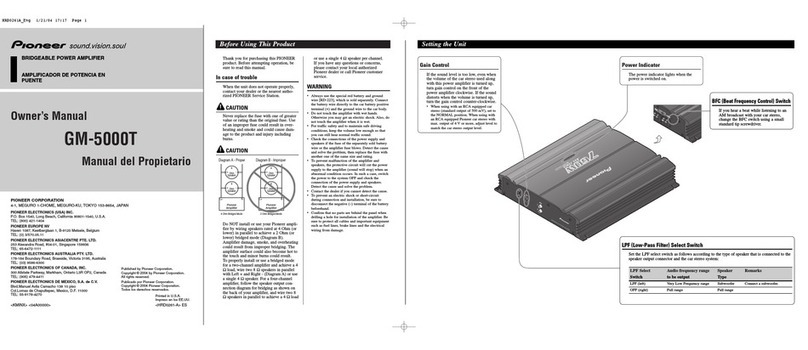
After the amplifier has been installed and all connections have been made careful
-lyand securely, turn the radio on so that the amplifier is switched on automatically.
After a short power-on period, the amplifier reaches its full performance.
Now turn up the volume slowly using the volume control of the radio. If there is no
sound or only a distorted replay, switch off the radio immediately, the amplifierwill
also switch offautomatically, and check if all connections have been made correctly.
POWER=LED POWER INDICATOR
After the orderly connection of the three power terminals, the LED indicator shines
green and goes out with off.
PROTECT =LED PROTECTION INDICATOR
This set is equipped with an overload protection, immediately upon overloading
due to short circuit or much increased temperature the overload protection is
activated and the red LED indicator is shining. Through this the amplifier is
protected against damage. In case of the thermal protection a certain short cooling
time must be allowed after which the amplifier automatically resumes operation.
LEVEL CONTROL
The input level control allows the system to work well within a wide range of output
level. Choose the adjustment in the way that you achieve a sound most possibly
without any distortion. as a guideline the following procedure is recommended:
If you use several amplifier, the adjustment has to be made for each set separately,
tune up the volume of your car radio to 2/3 of the maximum volume.
Now turn the gain control of the amplifier from " Min " to " Max " direction until you
can hear distortions. Then turn the levelcontrol a little back to " Min ". The gain
control adjustment is finished now.
Attention! If you use 2 Ohm speakers in stereo mode. Tri-mode or 4 Ohm speakers
in bridge mode and the overload protection is triggered, turn the gain control to
" Min " direction, until the operation is free of trouble.
LOW PASS CONTROLS
This amplifier has controls for making good sound
combination.
high pass and low pass
OPERATION INTERFERENCE
Use only ascreened audio cablefor the wiringbetween " low level in " of the
amplifier and RCAor DIN output of the radio .
Lay the signal, speaker and power cables separately with enough distance
from one anotherand also fromeach other carcable. lf notpossible, you can
lay the circuit and ground cable together with the serial cables. Audio and
speaker cable shouldbe as faraway from theseas possible. The REM cableto
the automatic antennaoutput of the radio can belaid together with the signal
cables.
Avoid ground loops by laying the ground wiring of all components to a center
point in astar-like way. You can find the best central point in measuring the
voltage directly atthe battery. Now comparethis voltage value with the chosen
ground point andthe (+) terminal of the amplifier. lf the measured voltage in
only less different you've found thecorrect central.Otherwise youhave to look
for another point. You should measure withthe ignition being switched on and
additionally switched on other electronics ( rear window heating and light ).
If there are pickups from external electrical sources into the speaker cables,
divide the coreleads and twistthem together.
If there are noises from the car electronics. Add an interferencesuppression
choke to thepower wiring .
If there are huming noises, use thicker ground cables or add further ground
cables to thechassis.
Toreduce contact resistance and bad andloose contacts, please tin the cable
ends or use multi core cable ends, spade terminals or others. Gold Plated
spade terminal are free of corrosion and have thelowest contact resistance.
Should all these measures to without any success. theuse of aground loop
isolator may solvethe problem.
All cables aresources of interference. The power cable and RCA audio cable
are very proneto interference; theremote cables areless prone . There is often
interference caused bythe generator (piping), ignition ( cracking ) or other car
electronic parts. Mostof these problemscan be eliminatedby correct and careful
cabling. In doingso, these arethe following guidelines:
